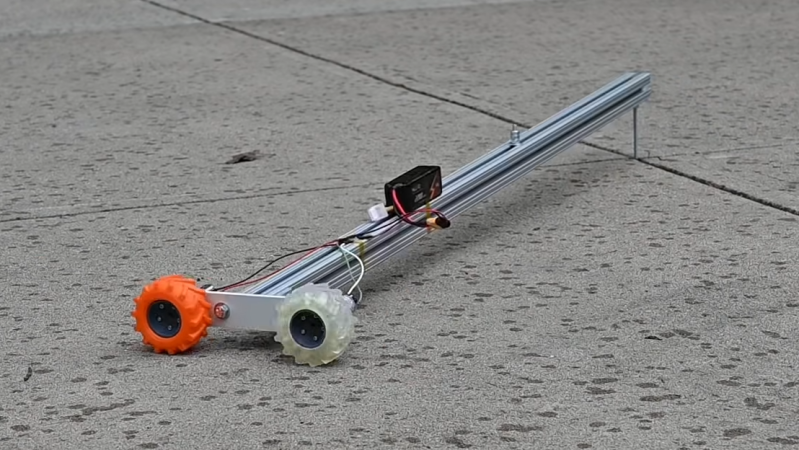Many robot builders and RC enthusiasts find themselves turning to 3D printed tires. The benefit is you can make them in any size and style you want, and they’re as readily available for as long as your home printer is still working. [Michael Rechtin] printed some up and decided to see how long they’d actually last in use.
[Michael] printed a pair of tires for the test. One was made in TPU on a typical FDM printer, while the other was printed in flexible resin. The tires were then installed on hubs and fitted with gear motors for drive. The assembly was then fitted to the end of a test tether that would turn in circles for hours to put mileage on the tires.
After many hours and around 10 miles of testing, both tires were showing signs of wear. Notably, the resin tires showed a lot more wear than the TPU version, suggesting the latter material is a better choice for printing hard-wearing tires.
Overall, it’s reminiscent of the tether testing we saw from [rctestflight] recently. There’s something compelling about thrashing something round in circles to learn something in the process! Video after the break.
















For others who also didn’t know, TPU is short for Thermoplastic Polyurethane.
Thanks
I already knew this, because I watch the Crafsman Steady Craftin’ with it in his benchtop injection molding machine on YouTube, and you should, too!
His videos are good but I can’t stand the way he talks.
What? His voice and “crafsmanisms” (one of my favorites being “texturistics”) are among the best parts of his presentation style!
Ah a descent into texturisticalism, say no more.
HaD editors need to start using the abbr HTML tag. There are too many conflicting acronyms to keep them all straight.
You mean like, Toilet Paper User?
B^)
no, the wear is chordal (toe in/out) by them being not in line with the tether shaft
I would like to point out that grip vs wear is a pretty common compromise in tires. Summer tires are softer than all-seasons because they’re grippier in appropriate conditions, we don’t just automatically use a billion treadwear rating tire because it’ll last the longest.
In other words, I think it would be helpful to also rate their traction.
This. Tradeoffs are a real thing. Also heat resistance is a big tradeoff between these as well. I’d rather put the resin tires on if you were in an Arizona, in the summer. Those TPU tires would be a bit melty.
Summer tires are harder btw.
Does anyone know how tpu fairs long term? Is it full of platicisers that leach out over time? Or will it stsy rubbery after 5+ years?
If you’ve ever grabbed hold of a tool or appliance or anything with a “soft touch” surface then went “Ewwwww!” as it stuck to your hand, that’s crappy TPU overmolding that’s gone bad.
The only way to fix it is to strip it off. Lacquer thinner and a lot of paper towels can work, if the rest of the plastic resists that solvent. You definitely don’t want to strip bad TPU with acetone if the housing is made from ABS.
This stuff is soooo disgusting! To it me it’s usage is kinda planned obsolescence.
You’re lucky if the overmold just turns sticky, the worst type smells awful when it starts to rot too!
Not to mention the foul taste!
You’re not meant to eat it!
I think a better comparison would have involved 2 separate tests, one with only the resin tyres, one with only the TPU, just to ensure both are subjected to the same forces.
Or at least swap position every X cycles…. in theory the forces are equal with that rig, in practice, something might be a tad off.
I have a bit over 100 miles on my NinjaFlex tires I printed for my electric skateboard. They still look great but they’re starting to stretch out a bit. They’ve lost some of their original shape. 9/10 would print again.
Wasn’t the conclusion from the OpenRC F1 car that printed TPU tires lacked grip? There is one video (from Joel?) featuring a race with many OpenRC cars with a lot of them spinning out of control due to the TPU tires.